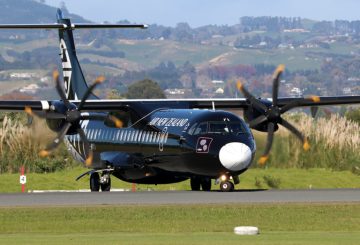EU 기후관리국에 따르면 2024년 2월은 사상 가장 따뜻한 2월이었습니다.이는 9개월 연속 기록적인 기온을 기록한 기록입니다.2023년 6월 이후, 매달 각각의 시기에 새로운 기온 최고치를 기록했습니다.
또한 세계 해수면은 사상 최고 기온을 기록하고 있으며 남극 해빙은 매우 낮은 수준에 도달했습니다.태평양의 엘니뇨 기상 현상이 이러한 기온의 원인이긴 하지만 인간이 초래한 기후 변화가 주요 원인입니다.
세계기상기구 사무총장인 셀레스트 사울로 (Celeste Saulo) 교수는 “열을 가두는 온실가스가 주범”이라고 말합니다.이산화탄소 농도는 최소 2백만 년 만에 최고치를 기록했으며 지난 한 해 동안 크게 증가했습니다.
이러한 가스로 인해 2024년 2월은 인간이 대량의 화석 연료를 태우기 시작하기 전보다 약 1.77°C 더 따뜻해졌습니다.이 기온은 2016년 대비 이전 기록을 약 0.12°C 경신했습니다.특히 서호주, 동남아시아, 남부 아프리카, 남아메리카에서 더위가 심했습니다.
지난 12개월 동안의 평균 기온은 현재 산업화 이전 수준보다 1.56°C 높습니다.2015년에 거의 200개국이 심각한 기후 영향을 피하기 위해 지구 기온 상승을 1.5°C 미만으로 유지하기로 합의했습니다.이 임계값은 아직 깨지지 않았지만, 계속해서 기록적인 기온을 기록하는 것은 전 세계가 이러한 수준에 얼마나 가까워졌는지를 보여줍니다.
기온 외에도 다른 기후 지표도 기록적인 수준에 이르고 있습니다.한 가지 중요한 예가 해수면 온도입니다.이러한 해양 열 증가는 단순히 엘니뇨 때문이 아니라 지난 10개월 동안 지속적으로 높은 수준을 유지해 왔습니다.이는 산호초의 대량 백화, 해수면 상승, 더 심한 허리케인으로 이어질 수 있기 때문에 우려되는 사항입니다.
역사상 가장 강력한 5대 사건 중 하나인 2023-24년의 엘니뇨 현상 (Elniño) 현상 (Elniño) 은 점차 약화되고 있습니다.이는 향후 몇 개월 동안 계속해서 기온과 기상 패턴에 영향을 미치겠지만, 4월과 6월 사이에는 중립 기후로 전환되고, 6~8월 사이에는 라니냐로 알려진 더 시원한 국면으로 전환될 것으로 예상됩니다.이로 인해 지구 기온이 일시적으로 낮아질 수 있습니다.
그러나 인간 활동으로 인해 대량의 온실가스가 계속 배출되면 장기적으로 기온이 계속 상승하여 기록적인 기온과 극심한 날씨가 발생할 것입니다.런던 임페리얼 칼리지의 기후 과학 선임 강사인 프리데리케 오토 박사는 “우리는 화석 연료 연소를 중단하고 더 지속 가능하고 재생 가능한 에너지원으로 대체해야 합니다”라고 말합니다.“그렇게 하기 전까지는 기후 변화로 심화되는 기상 이변은 계속해서 생명과 생계를 파괴할 것입니다.”


















































-360x245.jpg)










